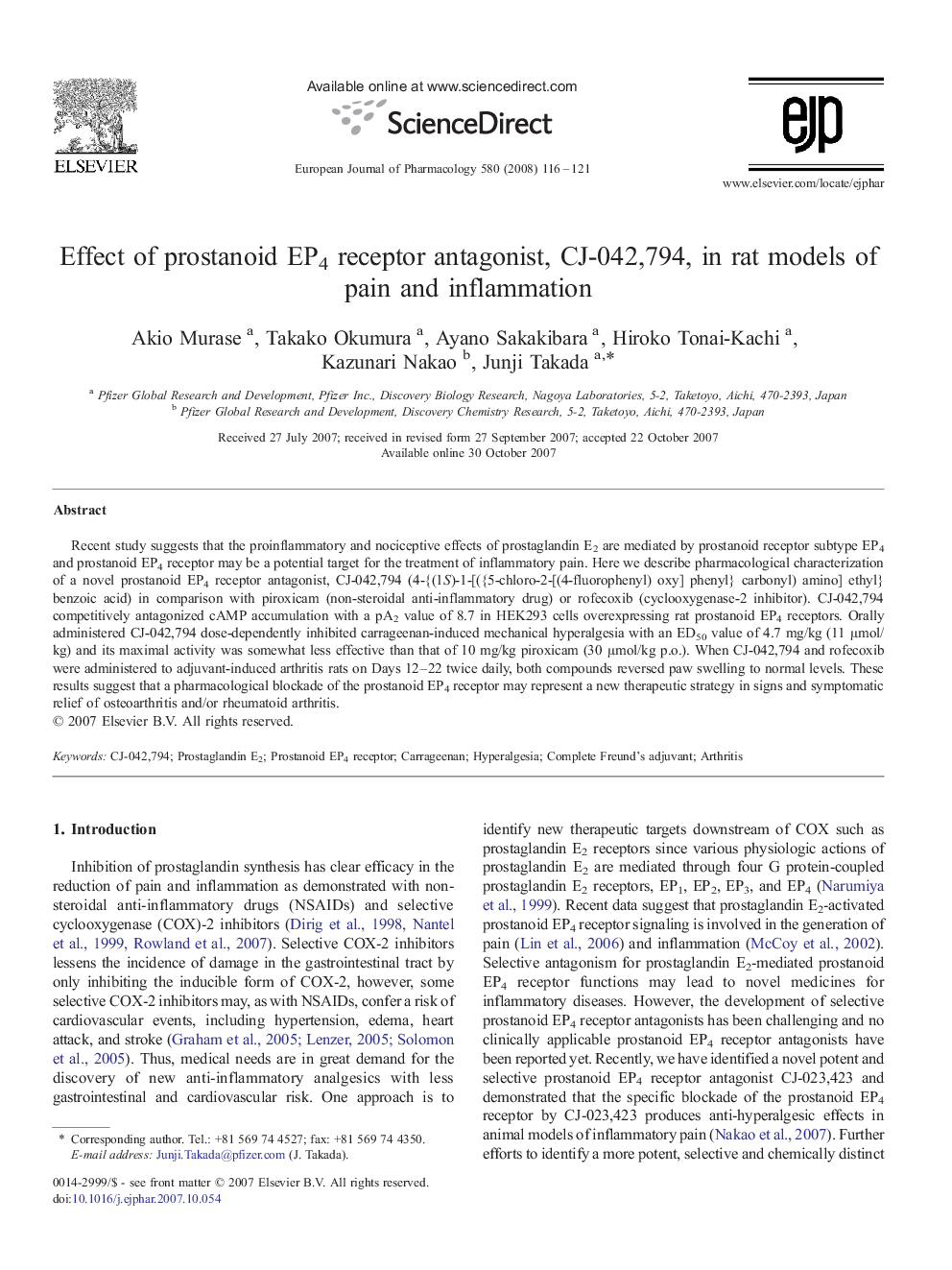| Article ID | Journal | Published Year | Pages | File Type |
|---|---|---|---|---|
| 2535638 | European Journal of Pharmacology | 2008 | 6 Pages |
Recent study suggests that the proinflammatory and nociceptive effects of prostaglandin E2 are mediated by prostanoid receptor subtype EP4 and prostanoid EP4 receptor may be a potential target for the treatment of inflammatory pain. Here we describe pharmacological characterization of a novel prostanoid EP4 receptor antagonist, CJ-042,794 (4-{(1S)-1-[({5-chloro-2-[(4-fluorophenyl) oxy] phenyl} carbonyl) amino] ethyl} benzoic acid) in comparison with piroxicam (non-steroidal anti-inflammatory drug) or rofecoxib (cyclooxygenase-2 inhibitor). CJ-042,794 competitively antagonized cAMP accumulation with a pA2 value of 8.7 in HEK293 cells overexpressing rat prostanoid EP4 receptors. Orally administered CJ-042,794 dose-dependently inhibited carrageenan-induced mechanical hyperalgesia with an ED50 value of 4.7 mg/kg (11 μmol/kg) and its maximal activity was somewhat less effective than that of 10 mg/kg piroxicam (30 μmol/kg p.o.). When CJ-042,794 and rofecoxib were administered to adjuvant-induced arthritis rats on Days 12–22 twice daily, both compounds reversed paw swelling to normal levels. These results suggest that a pharmacological blockade of the prostanoid EP4 receptor may represent a new therapeutic strategy in signs and symptomatic relief of osteoarthritis and/or rheumatoid arthritis.
